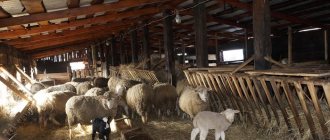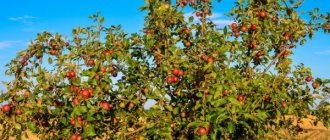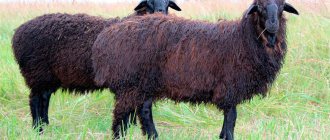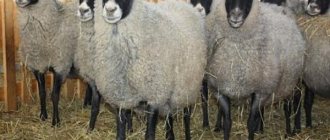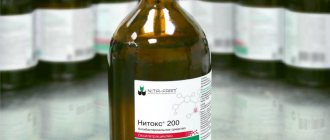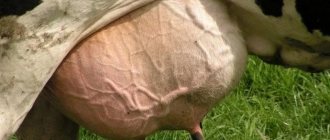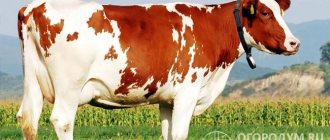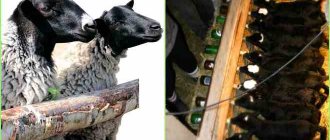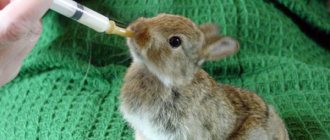Sheep milk is an additional source of profit for the farm. It is rarely consumed fresh due to its high fat content, but it is used to prepare fermented milk products and various types of cheese. The article will introduce readers to the breeds of sheep that produce the most milk during the lactation period, and will tell you how to properly milk these animals.
Sheep milk
Characteristics of sheep's milk
Milk obtained from sheep is used in the territories of Central Asia and the North Caucasus, Greece, Italy, the Middle East, and Crimea. It is there that sheep farming is widespread, and local residents are aware of the unusually beneficial properties of this product. Dairy breeds of animals are specially bred, and during 4-5 months of lactation, one sheep can produce more than one hundred kilograms of dairy product.
Sheep milk itself is considered tasty - it has a sweetish, delicate, but tart characteristic taste. Other products made from this raw material also acquire the same taste: yoghurts, cheeses, curdled milk, kefir, butter.
This product is indicated for baby food
The product obtained from sheep is one of the most valuable in its composition. Sheep milk is superior to both goat and cow milk in terms of calcium, minerals, and protein content (from 4% to 6%). The concentration of vitamin D in sheep's milk is two and a half times higher than in cow's milk, and it also contains 6% to 8% fat in its raw form and approximately 20% dry matter.
Thus, this is perhaps the best natural product that allows you to strengthen bones and teeth, and also acts as a preventive measure for various bone diseases (osteoporosis, arthrosis and arthritis, and the like).
Shepherds, knowing about the beneficial properties of sheep's milk, milk animals directly while grazing.
In addition to its positive effect on bones and teeth, sheep's milk works very well as a general tonic after surgery or serious illnesses, to maintain immunity. In addition to calcium, the product is rich in phosphorus, and the ratio of these essential elements is such that they are both almost completely absorbed by the human body.
This is interesting! Milk obtained from sheep contains a storehouse of microelements important for the human body, such as folic acid and B12, so it is indicated for the nutrition of pregnant women.
It is better to consult your doctor about the possibility of taking the product during pregnancy.
But, despite the benefits, many people reject this product because of its special aroma, which many find unpleasant and harsh, as well as its high fat content. But the fats contained in sheep's milk contain large amounts of vitamins A, E and D, which are also fat-soluble. For comparison, 100 grams of cow's milk contains 0.04 grams of vitamin D, while sheep's milk contains 0.18 grams.
The high content of saturated fatty acids in raw milk obtained from sheep allows the human body to absorb lactose more easily and quickly. Note that if a person has lactose intolerance, then he can eat fermented milk sheep products, in which lactose is completely replaced by lactic acid.
Homemade sheep's cottage cheese
This is interesting! People who cannot tolerate cow's and goat's milk sometimes calmly drink sheep's milk without any consequences for their well-being and health.
Sheep's milk has excellent antioxidant properties; it synthesizes essential amino acids, vitamins D and A, and cholesterol in the human body. If you eat such a product on a regular basis, you will notice that brain function improves due to increased oxygen consumption by cells.
Sheep milk contains zinc, which is necessary for maintaining overall well-being, as well as nutrition and skin health. The casein protein in this product, together with zinc, becomes an excellent solution for the treatment of eczema, anorexia, asthmatic attacks, and skin diseases.
In the evening, drink warm milk to improve and normalize sleep.
This is interesting! 100 grams of sheep milk contains 5.7 grams of protein, 4.9 grams of carbohydrates, 7.8 grams of fat. Calorie content – about 110 calories.
What are the benefits of sheep's milk?
Many people who have tried this product immediately note its specific smell and high fat content. Therefore, the raw milk of these animals is almost never consumed in our country. However, from the point of view of its usefulness, it is in vain.
Let's start with quantitative characteristics. The milk produced by these animals contains from 6 to 8 percent fat, from 4 to 6 percent protein, and from 18 to 20 percent dry matter. Compare the same indicators in cow's milk.
Sheep's milk is significantly superior to cow's and goat's milk in terms of the content of various minerals and calcium. Let’s add here a high concentration of vitamin D (twice as high as in cow’s vitamin) and we understand that there is simply no better natural product for strengthening bones, as well as preventing and treating a disease such as osteoporosis.
In addition to its beneficial effects on bone tissue, calcium is very important for the body during the recovery stage after illnesses, as well as for strengthening the human immune system.
Ask any specialist in proper nutrition, and he will say that phosphorus is necessary for the body to quickly absorb incoming calcium, so another undoubted advantage of sheep's milk is the almost ideal ratio of these two essential microelements.
Any milk contains a whole range of valuable vitamins. Sheep is no exception in this regard.
It is especially rich in such valuable elements as vitamin B12 and folic acid.
Cheeses made from raw materials obtained from sheep
It is from milk obtained from sheep that world-famous cheeses are made:
- rennets: peccaryno, roquefort, picodon, kachka-vala;
- pickle: Ossetian, Chanakh, feta cheese, feta and others.
Table No. 1. Popular sheep cheeses, characteristics.
| Title, photo | Description |
| Brynza | Moderately salty, fermented milk cheese with a dense and slightly brittle consistency. Great for vegetable salads. |
| Gooda | This cheese is aged in leather wineskins made from the skins of young sheep, from which the wool is shaved. The raw materials are first filtered through a sieve with the addition of field herbs. Guda ripens for almost four months. |
| Pecorino | The name of the cheese is translated from Italian as “sheep.” This is a dense, granular product containing phosphorus, calcium, groups of vitamins C, E, B, A and PP. |
| Roquefort | Previously, these cheeses were made only from sheep's milk, which was kept in limestone grottoes until a noble greenish mold formed. Now this component is added artificially, preserving the ancient classic taste. |
| Feta | Greek cheese made from sheep's milk with a little goat's milk added. This product is stored in brine, which is why it has a salty, recognizable taste. |
| Chechil | Fibrous extracted cheese from the pickle variety. Can be used both in classic and smoked form. It has a sour milk spicy, slightly salty taste. |
| Halloumi | European cheese made from a mixture of sheep and goat milk. The main feature of halloumi is its high melting point, so this cheese is often fried or cooked over a fire or grill. |
Regardless of what type of sheep cheese, it is a concentrated version of milk, that is, it contains all the beneficial substances of this product in greater concentration: amino acids, proteins, vitamins.
Peoples who eat this product every day suffer much less from gastrointestinal tract problems and do not experience problems with vision or the skeleton. Sheep cheeses contribute to the prevention and reduction of rehabilitation time after fractures, fill the body with mineral salts, lecithin, proteins, and healthy fats.
In addition to the benefits, eating such cheeses also brings taste pleasure.
It is worth understanding that cheeses made from sheep's milk contain more than 30% fat and are also considered high in calories. Therefore, an adult should consume no more than 120-150 grams of this product per day so as not to gain excess weight.
This is interesting! Cheese made from such raw materials is recommended for teenagers, as well as those people who expend a lot of energy - intensely involved in sports or heavy physical work.
Fat content of this product
You can’t argue with the fact that the milk that sheep give is very fatty. Because of this, and also because of the special smell, it is rejected. Is it worth it? Let's try to figure it out together.
The fats contained in sheep's milk contain three essential vitamins that have fat-soluble properties - vitamins A, D and E. There are much more of them in this product than, for example, in milk obtained from cows and goats. For comparison, let's give one example: the content of vitamin D in sheep's milk is at the level of 0.18 grams per 100 grams of product, while the same figure for summer cow's milk is only 0.04 grams per 100 grams.
In addition, sheep milk has a much higher content of saturated fatty acids, which contribute to better absorption of lactose.
Since we are talking about lactose, we should mention this important fact: if a person cannot drink milk due to an allergic reaction to lactose, he should pay attention to fermented milk products made from sheep's milk, since in them lactose is completely converted into lactic acid.
In many cases, people with cow's milk intolerance consume sheep's milk without the slightest negative consequences for their health.
Dairy sheep breeds
Sheep are usually bred to produce two basic products - meat or wool, so "dairy" breeds are in the minority, but still exist. If a farmer plans to receive dairy raw materials from his farm, he can start a small flock of 15-20 heads, consisting specifically of dairy sheep. Let's talk about these breeds in more detail.
Video - Dairy Friesian sheep
Despite the fact that sheep are small animals, one female can produce quite a lot of milk product. So, on average, during the lactation period (from 4 to 6 months), the uterus produces an average of 130-180 liters of milk. There are also breeds with greater productivity.
Table No. 2. Dairy breeds.
| Title, photo | a brief description of |
East Frisian (eastern) | This breed was bred in Germany, and is rightfully considered a real record holder among dairy sheep. Thus, one sheep can produce up to 450 liters of milk in one warm season. Raw materials from such purebred sheep are taken for the production of Roquefort and Ricotta cheeses. |
Askaniyskaya | This is not a purely dairy breed, but rather a universal breed, bred in a Ukrainian nature reserve. During one lactation, large female Ascanian sheep are capable of producing up to 140 liters of fatty (up to 9%) tasty milk. |
Tsigaiskaya | One of the oldest breeds, also distinguished by its universal trend, making the Tsigai popular among farmers all over the world. In three to four months of lactation, one female can produce up to 150-160 liters of dairy product. |
Romanovskaya | This breed belongs to the dairy and meat breed. During one lactation, the uterus is capable of producing 130-140 liters of milk. Romanovtsy are popular among those farmers who want to receive a dairy product from sheep and then send the livestock for slaughter. |
| Balbasskaya | These sheep are bred in the mountainous areas of Azerbaijan and Armenia, and the milk of the Balbassians is used to make a local cheese, similar to Adyghe. During the season, the female is capable of giving up to 130 liters of raw materials. |
Let us note right away that it is unprofitable to raise large flocks of dairy sheep. Regardless of the breed, all these animals provide milk, skins, meat, and dairy products are considered more of a pleasant bonus among farmers than a serious economically profitable product.
However, given the current situation with sanctions and a ban on the import of foreign dairy products (in particular, cheeses), for many livestock farmers, dairy sheep have become a chance to occupy a new niche in business. Experienced farmers recommend having a small flock of a dairy line, given that such animals can not only be bred and milked, but also subsequently slaughtered and sold for meat and skins.
Romanov sheep with offspring
For medicinal purposes
Despite the high nutritional value of this product, it can be used in the diet of people who need to lose excess weight.
Typically, such diets involve the exclusion of most foods, as a result of which not only excess weight is lost, but also a large amount of vitamins and microelements is lost.
First of all, excess fluid begins to be removed from the human body, and along with it, mineral salts and calcium are washed out.
As a result, often after a decrease in body mass index, there is an increase in tooth sensitivity, brittle hair, and a decrease in bone density.
Despite the high nutritional value of this product, it can be used in the diet of people who need to lose excess weight.
By consuming sheep's milk, people on a diet will be able to forget about such problems.
Its composition contains calcium and phosphorus in almost equal proportions, which facilitates the correct absorption of both minerals by the body in full.
The dairy diet involves consuming the following products:
- kefir;
- cottage cheese;
- vegetable salads dressed with yogurt;
- oatmeal or buckwheat;
- apples;
- bananas (no more than 1 piece per day);
- milk - 1 liter throughout the day;
- water - at least 1 liter per day.
It will be useful for you to know about the fat content of cow's milk. The duration of such a diet should not exceed 7 days. In terms of chemical composition, such a diet is inferior.
Its effect is achieved by sharply limiting sodium salts, which helps accelerate fluid excretion.
Yarotsky's cottage cheese and milk diet is prescribed for hypertension and poor circulation.
The duration of use should not exceed 1–2 days. For obesity, it is used as a fasting remedy. Involves consuming 400 g of cottage cheese and 1 liter of milk per day and sufficient clean water.
How to keep and feed dairy sheep?
Sheep from the dairy line do not require any special housing conditions, but the farmer must understand that in order to maintain productivity, the animals need to create comfortable conditions and establish a diet.
The first thing that needs to be equipped for the herd is a sheepfold under a roof, protecting the livestock from cold and bad weather. Any building with windows and a wide doorway can be used as a living space for sheep. There should be no drafts in the sheepfold, the floor should be dry and level (a large amount of straw is used as bedding).
An example of a good sheepfold
Animals do not need to be separated by stalls or pens, but it is necessary to provide small fenced pens inside the sheepfold in which pregnant and lactating queens will live.
As with any other farm animals, sheep need to be provided with feeders (separately for grass and hay, separately for concentrates and root vegetables, mash), as well as reliable drinking bowls, from which water does not spill onto the bedding.
During the off-season and winter, sheep should have unhindered access to the outdoors.
It is imperative that dairy sheep spend time walking. To count on maximum productivity, you need to allow the flock to feed on its own and move long distances in the summer; in winter, give the sheep the opportunity to warm up and spend time in the fresh air.
Accordingly, if it is not possible to enclose a large area with a fence, a shepherd should be assigned to a flock of sheep (usually one person with two or three dogs can do this). If sheep walk alone, it is worth considering that they may get lost - the herd is timid, and besides, the animals have poor memory and may not find the way to the house. The problem can be solved in an interesting way - sheep are sent to graze along with goats, which are more attentive and intelligent, and always return to the farm.
Basic requirements for a sheepfold
Dairy sheep nutrition
If there are no difficulties with keeping these animals, then the farmer should approach the preparation of the diet more responsibly. So, in the summer, sheep take care of their food on their own - it is only important to drive the flock to high-quality green pasture. In the autumn-spring season, as well as in winter, the responsibility for feeding the herd falls on the shoulders of the owner.
To ensure that sheep productivity does not suffer, high-quality feeding must be organized all year round
The winter menu for dairy sheep should include the following:
- Hay, haylage, silage. All of these products are based on greens. Hay is the most budget-friendly option for winter feed for sheep, but you need to take into account that it is better to make hay from young or flowering grasses from the pasture where the herd grazes in the summer. Haylage is also mown grass, but it retains more than half of the natural moisture, and such feed is most preferable for productive sheep. Silage is fermented grass or other waste from greens, vegetables, and herbs.
- Melons, vegetables, root vegetables. To smooth out the winter lack of nutrients in the livestock, fresh succulent feed should be included in the daily diet of sheep: pumpkin, cauliflower and regular cabbage, raw carrots, zucchini, beets and others, depending on the region.
- Concentrates. This includes special feed for sheep, as well as grain crops: barley, oats, corn and other legumes. Concentrates include oilseed meal, meal and bran.
- Mineral, salt additives. Sheep should have lick salt available at all times, and mineral and vitamin complexes should be added to the daily diet. In this way, not only the health of the livestock is maintained, but also the beneficial properties of raw milk.
Concentrated feed contains protein, fiber, vitamins
You can read more about the diet and feeding characteristics of sheep in our special article.
Prices for felucene mineral lick for goats
Felucene mineral lick
Unique composition
What's in sheep's milk?
- Firstly, a group of various beneficial vitamins. Thus, vitamin A not only helps improve vision, but is also indispensable in the fight against various eye diseases. Drinking the drink will enrich the body with vitamins D and E and thus help your skin become beautiful and healthy. This combination of vitamins will be especially useful for those who suffer from various skin diseases.
- Secondly, sheep milk contains vitamin B12 and folic acid in abundance. As a rule, these vitamins are necessary to maintain the body and are most often taken as supplements to strengthen the immune system during cold season.
- Thirdly, the high concentration of potassium contained in it will help improve the health of the cardiovascular system.
- Fourthly, another advantage of the drink is that it is rich in zinc, which is indispensable for the beauty and health of hair, as well as the vigor and energy of the whole body. In addition, the supply of the required amount of zinc increases appetite, which is why nutritionists prescribe sheep milk for those who struggle with anorexia.
- Fifthly, sheep's milk contains a lot of calcium, which is why it is often recommended to drink it to treat diseases such as osteoporosis.
Date from a seed - how to plant and germinate a date palm at home (instructions + photos)
How to milk sheep: step-by-step instructions
Even for farmers familiar with milking cows, milking sheep will have its own nuances. Let's talk about them in more detail.
Video - How to milk sheep?
Step 1. For milking, you need to build a small pen (so that the sheep is positioned end to end), or prepare a pen to which the animal will need to be tied. Another option is to have a second person stand in front of the sheep and hold its head.
Sheep are not very calm animals, and if their movement is not limited, they will not stand still
Step 2. You need to sit not on the side, as is customary with cows or goats, but behind the sheep - it is more convenient to place a folding light chair. The pre-washed milk pan should be covered with fine gauze and placed under the animal’s udder.
To keep the sheep quiet during milking, you can offer her a container of food.
Step 3. Before you start milking, you need to thoroughly wash the uterus' udder. To do this, you can use a chlorhexidine solution, baby soap, or even wet wipes. Then the udder is washed with clean warm water, after which it is lubricated with vegetable oil (prevention of cracks).
If desired, you can use zoo cream for milking
Step 4. Let's start milking. It is important that the first stream always goes to the floor, and not into the milk pan. The procedure itself lasts about three to five minutes; there is no point in milking the sheep longer.
You can get 2-3 liters of milk from one sheep per day, but not in one milking!
In baby food
The products in question are not used in baby food up to one year of age. Contrary to the prevailing stereotype, any type of whole milk is contraindicated for babies.
They cannot be compared in value to human milk, so their consumption leads to the development of rickets, digestive disorders, and vitamin deficiencies. During this period, if necessary, it is better to use infant formulas adapted by age.
When introducing sheep's dairy products into your child's diet, clearly monitor his body's reactions and always boil the liquid before consumption.
Try not to introduce two new products to the menu at the same time. From 12 months you can start introducing sheep milk diluted with water 1:1. First, the baby is allowed to try a new product in an amount of no more than 50 ml.
It is worth considering that the child may refuse it altogether. If this happens, you shouldn't force it. Children will benefit greatly from consuming sheep's cottage cheese.
It can be introduced into the baby’s diet at the age of 8–9 months. Initially, it is given only in processed form, i.e. as part of casseroles.
If the process of getting to know the product goes well, after a month you can try introducing fresh cottage cheese.
In cosmetology
A lot of cosmetics are created based on this valuable product:
- moisturizing and rejuvenating creams and masks for the skin of the face, body, hair;
- shower gels;
- acne removers;
- preparations to reduce the intensity of sebum secretion and make the skin matte;
- body scrubs that improve metabolic processes in skin cells and increase elasticity.
Application
Sheep milk is used like any other. It has a rather specific smell - it is rarely consumed undiluted. This product is indispensable for culinary purposes. From sheep's milk you can make wonderful yoghurts, delicious butter, and other fermented milk products, as well as cheese that is amazing in its taste.
All over the world, fresh sheep's milk and cheeses made from it (Roquefort, Provençal, feta cheese, feta) are very popular. A huge plus is that its nutrients are light and well absorbed by the body, so sheep products are always recommended by experts for a dietary and balanced diet.


